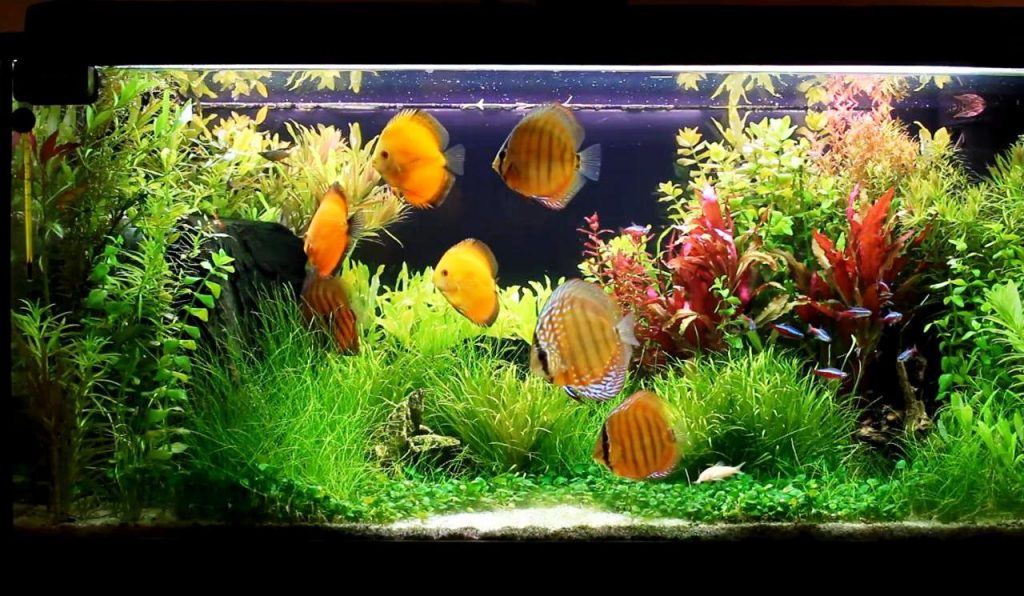

Now, it’s not impossible for Discus to keep healthy with slightly higher pH and GH levels. The pH levels can range from 6.0 – 7.0 and the GH can range from 3 – 8. pH and Hardnessĭiscus fish prefer soft, acidic water. Hardy plants such as bucephalandra, anubias, and java fern can be used. Keep in mind that most aquarium plants don’t do well with higher temperatures. Take note that warmer water’s ability to hold oxygen is lower – make sure that your tank is well aerated. Yes, unlike most other tropical fish, Discus prefer warmer water. The ideal temperature for Discus fish is between 84 – 86 ☏. Their disc shape gives them a tall appearance – so shallow tanks are not ideal. A general rule of thumb is 10 gallons per 1 fish. Considering the size that Discus can grow, a minimum of 55 gallons are required for a tank of 6 Discus. Plants Yes, live plants (oxygen supply, Nitrate reduction, compliments Discus’ colors) and driftwood (lowers pH and GH of water). They don’t do well in tanks where nitrogen levels are spiking or unstable. Tank Size 10 gallons (45.4 liters) per Discus Temperature 84 – 86 ☏ (28 – 31 ☌) pH 6.0 – 7.0 Water Type Freshwater Hardness Soft, 3 – 8 GH Substrate Sand, pebbles, rocks (they are foragers) Filter Yes, a filter is required as Discus produce a large amount of waste and stir up the substrate. That’s where a quarantine tank can be very valuable. Please ensure that before adding any new fish to a tank, it’s properly cycled. Shy and submissive Discus fish that cannot compete will need to be separated from the “ tank bullies.” But, as with any fish in the Cichlidae family, they’ll compete with each other to establish a “tank boss.” Naturally, they also become territorial during breeding. Their peaceful personalities (and beauty) make up for their difficulty in keeping.

This means that you can find a diverse type of Discus that will make any aquarium breathtakingly beautiful! Behavior Of course, Discus fish are popularly known for their variety of colors and patterns. They have rounded anal and dorsal fins and have a pronounced caudal fin and pelvic. Some may vary with a rounder or more elongated appearance. Appearanceĭiscus fish got their name from, well, their flat and disc-shaped appearance. Discus fish hide away in shaded areas and breaks in the water flow created by fallen trees or small inlets. tend to congregate near fallen trees, known as “galhadas”, along the shore.

The red Discus is native to the Rio Negro area.Īll these guys prefer quiet waters and are rarely seen in waters with strong currents. The blue Discus gravitate toward the eastern side of the basin and the green Discus more toward the western side. Tarzoo (green Discus) Common Names Discus fish, Pompadour fish, King of the aquarium Location Amazon river basin, South America Size 4.6 – 8 inches (12.3 – 15.2 centimeters) Life Expectancy 10 – 15 years average (in captivity) Appearance Round/Disc-shape, flat sides Color Blue, brown, red, green, and other colors with a variety of patterns and markings Diet Omnivores Behavior Peaceful and shy (may become territorial when breeding) Tank Size 10 gallons (45.4 liters) per Discus Temperature 82 – 88 ☏ (28 – 31 ☌) pH 6.0 – 7.0 Water Type Freshwater Hardness Soft, 3 – 8 GH Care Level Difficult Breeding Difficult Natural Habitatĭiscus fish can be found in the Amazon river basin, including the Rio Negro area. Aequifasciatus (blue or brown Discus), S. Thank With Google Discus Fish Care Guide: Overview Family Cichlidae Scientific Name Symphysodon Species S.


 0 kommentar(er)
0 kommentar(er)
